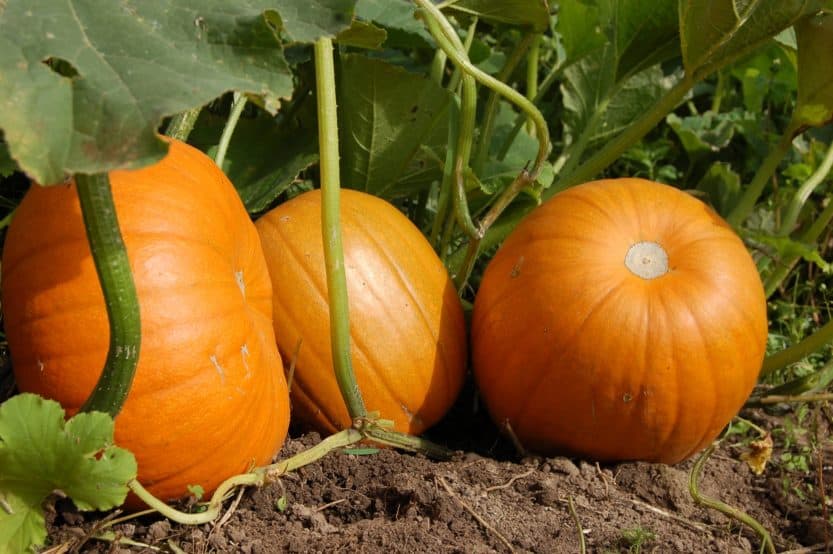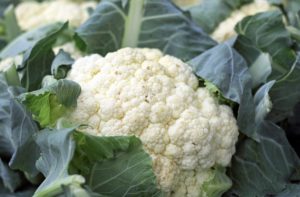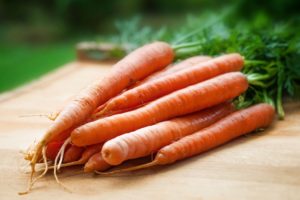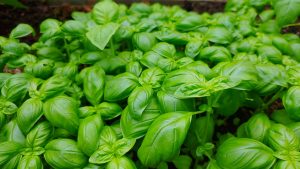Pumpkins have many uses, besides Halloween decorations, as their seeds are edible and their flesh can be used in many different recipes. Pumpkins are an excellent source of vitamin A, and a good source of fiber, magnesium, potassium and vitamin K.
Buy Pumpkin Seeds Online
| Image | Name | Rating | Shop |
|---|---|---|---|
 | Specialty Pumpkin Collection (3 Individual Seed Packets) Non-GMO | ||
 | Connecticut Fields Pumpkin 2 Packages of 100 Seeds NON-GMO | ||
 | David’s Garden Seeds Pumpkin 25 Non-GMO |
Types of Pumpkins
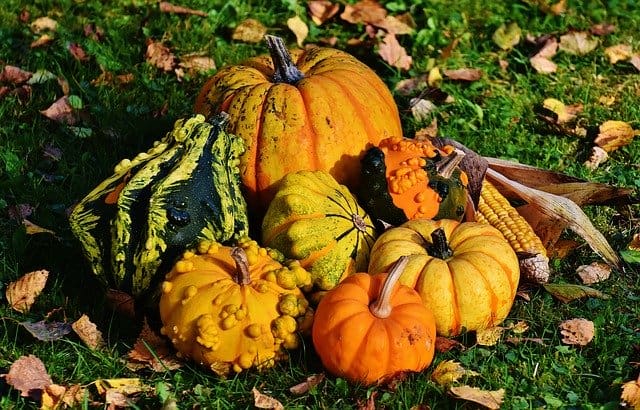
Pumpkins are most commonly eaten as pumpkin pie, but they can be added to a wide range of savory and sweet dishes. Pumpkins come in a variety of shapes, colors, and sizes. If you are growing pumpkins for decoration, choose a variety that was bred for size and shape.
Even though decorative pumpkins are edible like most pumpkins, they don’t have a rich sweet flesh like pumpkins bred for consumption. Pumpkins that are bred for human consumption, such as “Sweet Sugar Pie”, tend to be smaller and have a higher sugar content.
When Should I Plant Pumpkin Seeds?
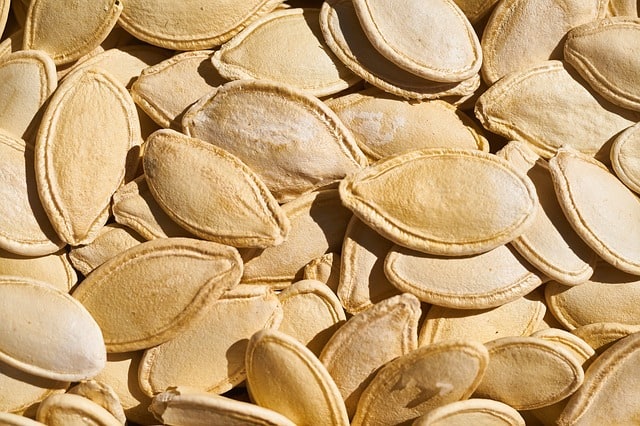
Pumpkins cannot tolerate cold conditions, so be sure to wait until your soil temperature is a least 65 degrees Fahrenheit (18.3 C). It’s best to wait until two weeks after your last frost before you plant pumpkins in your garden.
Pumpkin plants do not transplant well, so you should avoid starting the seeds indoors. If you want to harvest your pumpkins around Halloween, you can plant them in the late spring or early summer.
Planting Pumpkins
Do Pumpkins Need Full Sun?
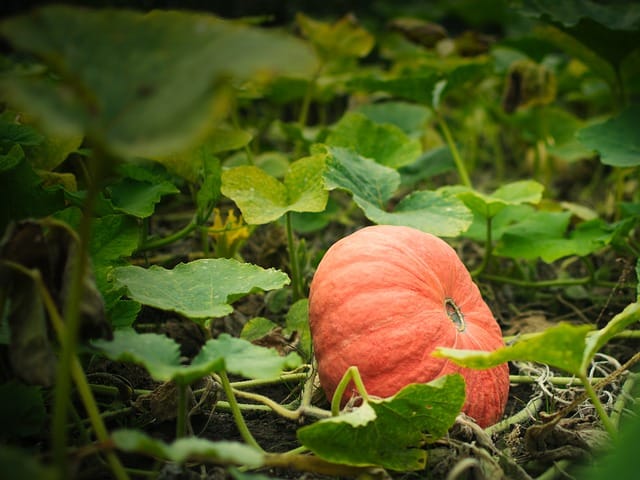
Find a location in your garden that gets full sun all day especially in the early spring. The sun will help your seeds germinate faster by heating the soil.
Pumpkin Soil Requirements
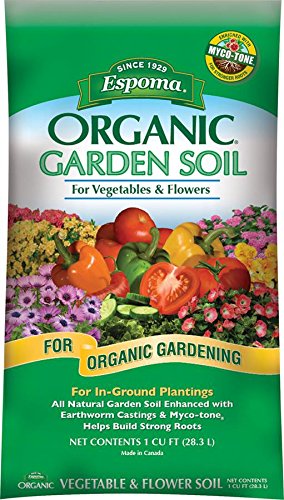
Pumpkins need very fertile soil (Buy Online), in order to produce a bumper crop. You can prepare your soil, two weeks prior to planting your seeds, by adding a liberal amount of compost and fertilizer. Mix the compost and fertilizer evenly throughout the first 4 to 6 inches (10 to 15 cm) of soil. The soil should have a pH of 6.0 to 6.5; and for the most part, pumpkins do well in most soils
Pumpkin Plant Spacing
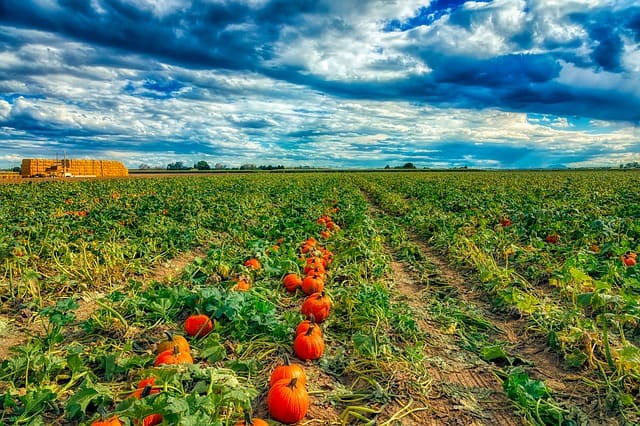
Once your soil is ready and the temperature is right, it’s time to plant the seeds. Pumpkin seeds should be planted 1 inch (2.5 cm) deep and have a final spacing of 30 inches (76.2 cm). In order to counter sporadic germination, you can plant your seeds 15 inches (38 cm) apart and thin any excess plants, once they have all germinated.
When you plant your seeds, gently water the seeds every day for about a week, until the plants emerge. Be sure to keep any weeds under control while the seedlings are still getting established. You can carefully pull the weeds that are growing close to the plants, and use a hoe to cultivate the soil further away from the seedlings.
Mulch for Pumpkins

A good weed control method that works well, especially with the large inter-plant spacing amongst pumpkins, is to use mulch. Mulch will have two benefits, as it will reduce weeds and help retain moisture.
Pumpkin Care & Harvest
How Much Water do Pumpkins Need?
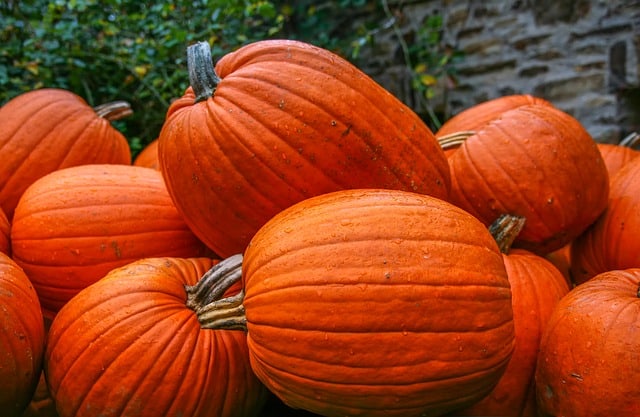
Pumpkin plants will require 1 inch (2.5 cm) of water every week, once they are fully established. You should fertilize every 2 weeks with a fast-acting liquid fertilizer. If at any time you see yellowing of leaves or any other signs of nutrient deficiency, then immediately fertilize the affected plants. Be careful not to over-fertilize the plants, as this will lead to lush vine growth, but reduced pumpkin yields.
Pumpkin Pests and Diseases
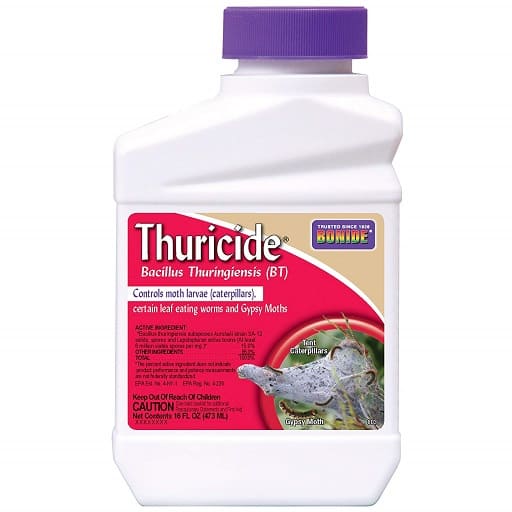
While your pumpkin plants are growing, be sure to keep an eye out for any insect infestations such as aphids, spider mites or beetles. If any signs of infestation occur, then quickly remove the offending insects and/or apply an organic insecticide (Buy Online), as this should limit the scope of the problem.
Pumpkin Powdery Mildew Control
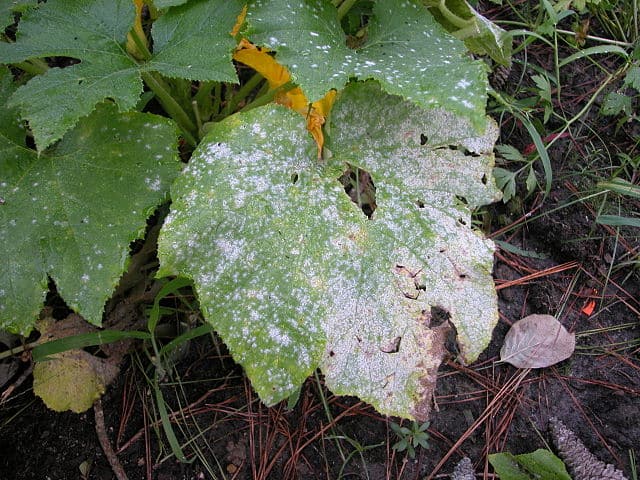
Another problem that most people growing pumpkins will eventually encounter is powdery mildew. This disease will most likely appear late in the season when the weather gets cool and damp. For the most part, powdery mildew only reduces the tail end of your harvest.
If you live in a climate that is prone to powdery mildew throughout the season, you will have to take some extra precautions. Make sure your plants have adequate air flow. Keeping the foliage as dry as possible, by watering in the mornings and not the evenings, should help limit any mildew problems.
How to Tell When Pumpkins are Ready to Harvest
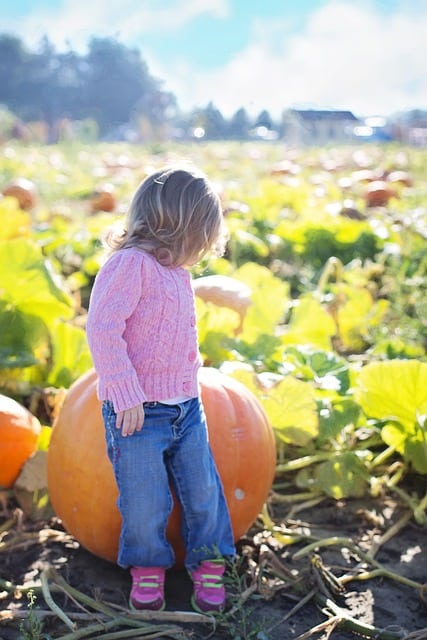
Once the pumpkins begin to reach full size, you can start checking them for ripeness. Depending on the variety, you should gauge when your pumpkins are ready to be picked based on the firmness of the shell.
The rind of the pumpkin should be hard and the stem should be starting to turn brown and die back. Pumpkins should never be harvested while they still have a soft outer shell, or they will rot in storage.
How to Harvest Pumpkins
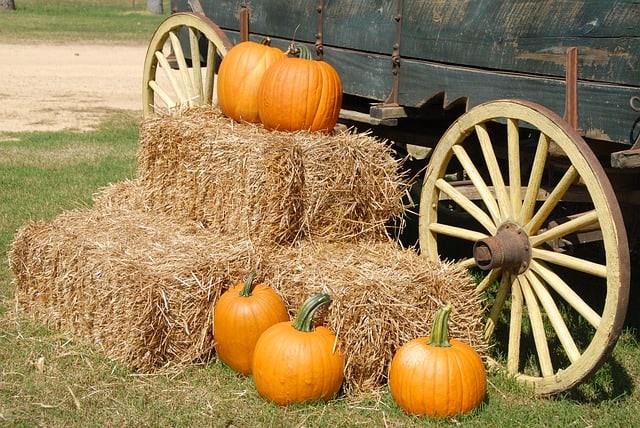
When the pumpkins are ready, cut the stem with a pair of shears, leaving at least 3 inches (7.5 cm) of stem attached to the pumpkin. Do not rip the stem from the pumpkin, as this can damage the pumpkin and cause it to prematurely rot.
How Long Do Pumpkins Keep?
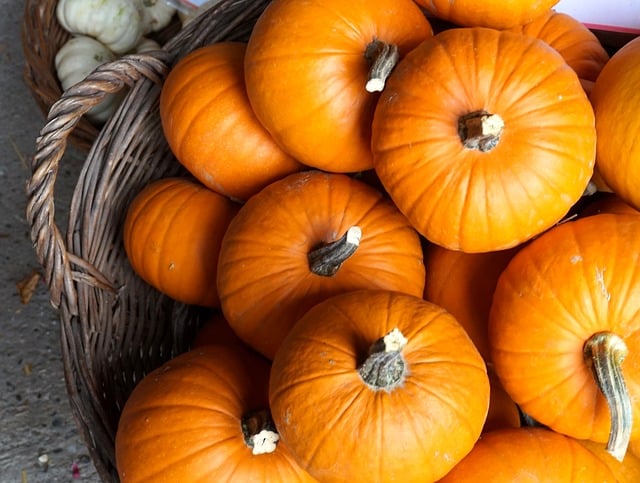
Pumpkins can be stored in a cool dry place for a couple months. If you make pumpkin puree, you can freeze it for a year or more.
Pumpkin Carving
You might also be interested in these Scary Pumpkin Carving Ideas


